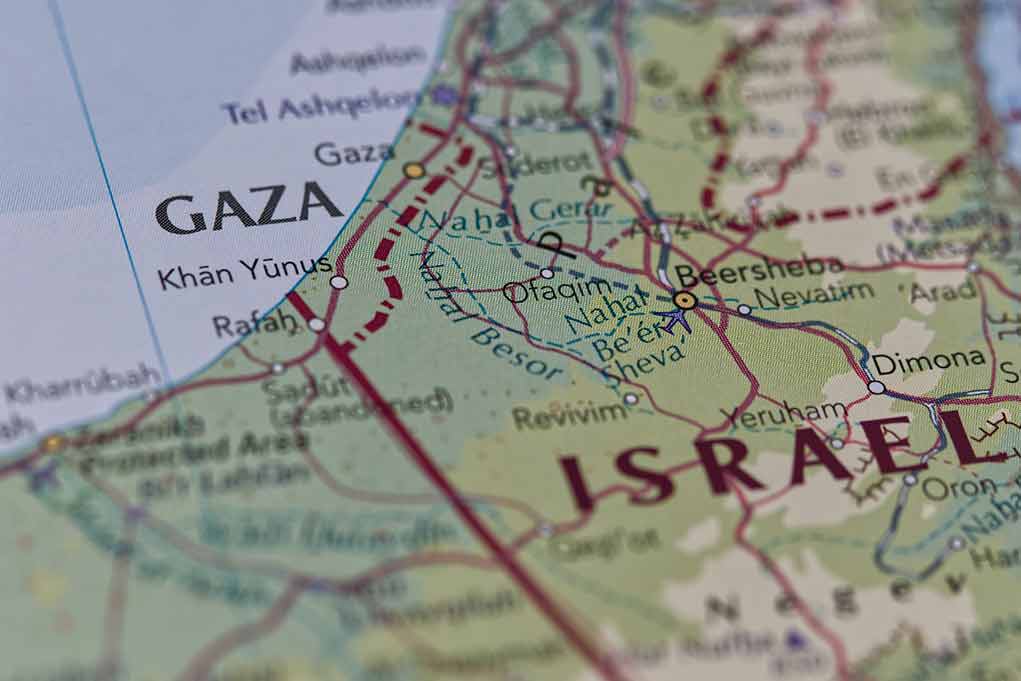
Israel’s Operation Gideon’s Chariots has begun with overwhelming force, targeting Hamas infrastructure while seeking to rescue approximately 60 hostages still held captive in Gaza, marking a dramatic escalation in the conflict that has already claimed over 100 Palestinian lives in the opening airstrikes.
Key Takeaways
- The IDF has launched “Operation Gideon’s Chariots,” a comprehensive military campaign employing a “clear, hold, build” strategy to dismantle Hamas in Gaza while attempting to rescue hostages.
- Extensive airstrikes have targeted over 150 “terror” sites in Gaza, with Palestinian authorities reporting significant civilian casualties.
- President Trump has acknowledged Gaza’s humanitarian crisis and proposed turning the region into a “freedom zone” for reconstruction as a luxury hub once hostilities end.
- Approximately 20 hostages are believed to still be alive in Hamas captivity, with about 60 hostages overall from the October 2023 attack.
- The Trump administration is expected to balance support for Israel’s security operations with mounting concerns about humanitarian conditions in Gaza.
Military Campaign with Strategic Objectives
The Israel Defense Forces have initiated Operation Gideon’s Chariots with a clear objective: systematically dismantle Hamas’ organizational and explosive networks throughout Gaza. This military campaign implements a strategic “clear, hold, build” approach designed to not only eliminate terrorist elements but also establish conditions for new civilian governance structures. The operation represents a significant escalation in Israel’s response to ongoing threats from Gaza, particularly following the October 2023 Hamas attack that resulted in Israeli civilian casualties and hostages being taken.
“Over the past day, the IDF has begun conducting extensive strikes and mobilizing troops to achieve operational control in areas of the Gaza Strip, as part of preparations to expand operations and fulfill the objectives of the war — including the release of hostages and the dismantling of the Hamas terrorist organization.” Said By IDF
Unlike previous operations that focused primarily on pressuring Hamas leadership through broad military action, the IDF has adjusted its strategy to isolate individual Hamas cells. This targeted approach aims to more effectively secure the release of hostages while minimizing civilian casualties. Israel has mobilized significant forces, including reservists, suggesting preparations for extended ground operations in strategic Gaza territories.
Hostage Crisis and Rescue Efforts
A central motivation behind Operation Gideon’s Chariots is the ongoing hostage crisis, with approximately 60 Israelis still held by Hamas, of whom only about 20 are believed to be alive. Israeli officials have emphasized that hostage rescue remains a priority, even as the broader military objectives of dismantling Hamas proceed. Recent developments saw the release of Edan Alexander, the last American citizen held hostage, following U.S. diplomatic engagement with various parties in the region.
Public opinion within Israel increasingly favors a ceasefire agreement that would secure the hostages’ release, according to recent polls. However, official statements from Israeli leadership have downplayed the likelihood of an immediate breakthrough in negotiations. The situation remains politically precarious for Prime Minister Netanyahu, who faces pressure both from families of hostages demanding their return and from conservative coalition partners insisting on complete military victory over Hamas.
— John Spencer (@SpencerGuard) May 5, 2025
Trump Administration’s Balanced Approach
President Trump has acknowledged the humanitarian dimensions of the Gaza crisis while maintaining support for Israel’s security operations. During his recent Middle East visit, Trump specifically addressed the situation in Gaza, demonstrating the administration’s recognition of the complex interplay between military objectives and humanitarian concerns. The Trump White House is expected to express concern for humanitarian needs while giving Israel latitude to conduct operations against terrorist threats.
“We’re looking at Gaza. And we’re going to get that taken care of. A lot of people are starving.” Said By Donald Trump
Trump has outlined a vision for Gaza’s future as a “freedom zone” that could be reconstructed as a luxury destination once hostilities conclude. This proposal represents a radical reimagining of Gaza’s potential, though implementation discussions have stalled amid ongoing violence. Hamas officials, meanwhile, have expressed expectations for increased American pressure on Israel regarding humanitarian access, with spokesman Taher al-Nunu stating they are “awaiting and expecting the US administration to exert further pressure.”
Humanitarian Concerns and International Response
Israel’s blockade of Gaza has drawn criticism from international aid organizations, which report rising levels of malnutrition and inadequate medical supplies. The current military operation has intensified these humanitarian concerns, with Gaza’s civil defense reporting high casualties, predominantly women and children, from the initial Israeli strikes. Israel maintains that its operations target terrorist infrastructure, accusing Hamas of using civilians as human shields—allegations that Hamas denies.
“We have the people. We have the distribution networks. We have the trust of the communities on the ground. And we have the aid itself.” Tom Fletcher, UN aid chief
U.S.-backed plans for aid distribution in Gaza have faced criticism from UN officials, who argue that established UN networks offer more effective delivery mechanisms. The conflict has also expanded regionally, with Yemen’s Houthi militia launching missiles at Israel, prompting Israeli strikes on Yemeni ports. This broader destabilization threatens to complicate diplomatic efforts to resolve the Gaza situation and address the immediate humanitarian needs of Palestinian civilians caught in the crossfire.















